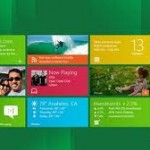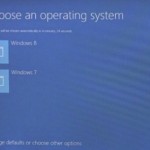With Windows 8, developers changed how Microsoft think about languages from a “local-market feature” to a “feature for everyone everywhere,” and have made it a priority for you to be able to work in any language you want, from any Windows 8 PC. If you can’t read the text that Windows presents to you, you can’t use Windows to its fullest potential. That’s why Microsoft is so excited to bring powerful, easy-to-use language features to more users than ever in Windows 8. (more…)
Recent posts
- How to downgrade Windows 10 to Windows 8?
- How do you go back to Windows 8.1 or 7 after installing Windows 10?
- Battle of the fastest among Windows 8 & Windows 10
- Tips and tricks on increasing productivity in Windows 8.1
- Enterprises should dump their Windows 8.1 deployment plan, says Gartner
- Skype stops updates for the Windows 8 app on the end of the first week of July
- Tricks to make Windows 8 work like Windows XP
- Windows 8 & 8.1 beats up XP this June!
- How to check for and turn on Windows 8 update
- 7 Tips To Save You From Widows 8.1
 Many consumer electronic devices these days provide a way for customers to get back to some predefined “good” state. This ranges from the hardware reset button on the back of a wireless network router, to the software reset option on a smartphone.
Many consumer electronic devices these days provide a way for customers to get back to some predefined “good” state. This ranges from the hardware reset button on the back of a wireless network router, to the software reset option on a smartphone. Info about Windows 8 has been trickling in piece by piece and we’ve been learning about all kinds of drastic design changes, like the lack of plug-in support for Metro, the new blue screen of death and now, the unthinkable; Windows 8 is replacing their decades-old BIOS boot sequence. You know, that good old grey-text-on-black-background, press-f12-for-boot-menu screen. It’s gone. Forever. Replaced by some new-agey “Graphical User Interface” thing that all the kids are used to. It’s a crying shame.
Info about Windows 8 has been trickling in piece by piece and we’ve been learning about all kinds of drastic design changes, like the lack of plug-in support for Metro, the new blue screen of death and now, the unthinkable; Windows 8 is replacing their decades-old BIOS boot sequence. You know, that good old grey-text-on-black-background, press-f12-for-boot-menu screen. It’s gone. Forever. Replaced by some new-agey “Graphical User Interface” thing that all the kids are used to. It’s a crying shame. The Windows Developer Preview is a pre-beta version of Windows 8 for developers. These downloads include prerelease software that may change without notice. The software is provided as is, and you bear the risk of using it. It may not be stable, operate correctly or work the way the final version of the software will. It should not be used in a production environment. The features and functionality in the prerelease software may not appear in the final version. Some product features and functionality may require advanced or additional hardware, or installation of other software.
The Windows Developer Preview is a pre-beta version of Windows 8 for developers. These downloads include prerelease software that may change without notice. The software is provided as is, and you bear the risk of using it. It may not be stable, operate correctly or work the way the final version of the software will. It should not be used in a production environment. The features and functionality in the prerelease software may not appear in the final version. Some product features and functionality may require advanced or additional hardware, or installation of other software.